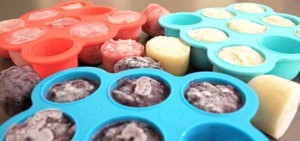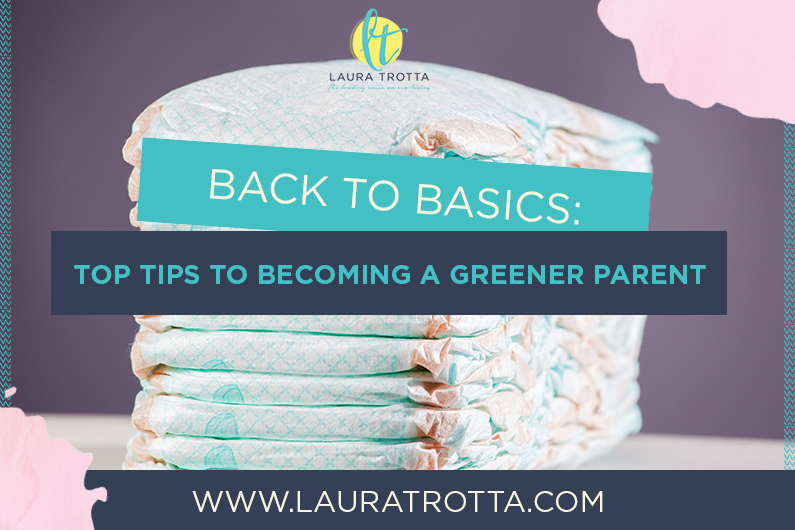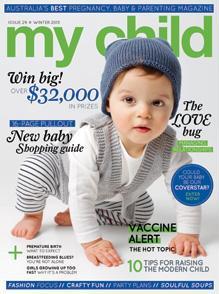 You only have to browse through the latest parenting magazine or blog to realise that green is the new black. Wooden toys, organic cotton clothing, even designer cloth nappies are now so on trend that they can be found in mainstream baby stores, rather than solely in eco baby boutiques.
You only have to browse through the latest parenting magazine or blog to realise that green is the new black. Wooden toys, organic cotton clothing, even designer cloth nappies are now so on trend that they can be found in mainstream baby stores, rather than solely in eco baby boutiques.
While the explosion of green parenting products is welcome, not to mention tempting if you don’t need much convincing to hit the shops, we all need to make a few tweaks to how we live, not just what we buy, in order to make a real difference to our planet.
Having a young family and a business myself, I understand how good intentions and plans can often get lost in a busy household. If like many parents you’re keen to reduce your family’s environmental impact, the following tips should help get you started.
1. Nappies
Without taking those of you who have babies in disposables on a long guilt trip, the waste issue created by them cannot be ignored. Approximately four million nappies are disposed of in landfill daily in Australia and New Zealand and many of these take up to 500 years to break down. Considering you’ll probably change your baby’s nappy around 5,300 times prior to toilet training, cloth nappies make both economical and environmental sense. Modern cloth nappies save you approximately $2500 per child all for the time investment of around five minutes a day. You can further reduce the environmental impact of nappy changes by using an eco-friendly laundry detergent, washing on a cold cycle in a front-loading washing machine, line drying your nappies and ditching the disposable wipes (use flannels and water instead).
2. Clothing
With the fast rate that babies grow, you may find your cherub has outgrown that sweet outfit before you’ve had time to remove the tag! For this reason, op shops and garage sales often have many pre-loved infant clothes in perfect condition.
If you are handy with a sewing machine, consider making baby clothes by “upcycling” some of your old clothes into trendy baby outfits. If, like me, you can’t suppress the urge to pick up a couple of new outfits each season, try to buy fewer garments of better quality made from natural fibres such as organically grown cotton, bamboo and merino. Steer clear of polyesters and other man-made fibres which are more energy intensive to produce and not as breathable. If you plan on having multiple children, it makes sense to invest in a few good quality unisex items for maximum wear.
3. Feeding
Breastmilk boasts no industrial manufacturing, packaging or food miles and is true eco baby food. If breastfeeding hasn’t been an option for you, infant formula manufactured from organic farming practices is the most sustainable alternative. Starting your baby on solids is an exciting time but need not cost the earth. Commercial baby food, while convenient, has used resources in its processing, packaging and transport to the consumer and creates a waste when disposed. If you fancy yourself in the kitchen, you may enjoy making your own baby food from fresh, local and preferably organic ingredients. For those who don’t mind a bit of mess, starting your baby on finger foods from your family meals from six months of age is a convenient and green alternative.
4. Toys
Nowhere is our throw-away society culture more obvious than in the toy section of our department stores. Like many new parents I have been inundated with cheap plastic or synthetic toys, many of which my children have ignored. They much prefer to play with me! We’ve had some great moments singing, talking, reading, dancing and even cooking and gardening together, all for little cost and waste. Of course as my boys have gotten older they have looked to toys for entertainment. Our local toy library has been brilliant for providing an endless stream of new toys without the need to store or find them a new home when my kids tire of them. When we do purchase toys, we opt for those made from sustainable materials and steer clear of battery-operated toys, which cause a waste problem in themselves. The benefits and joy obtained from outdoor play and creating toys out of everyday household items also can’t be underestimated.
5. Consumption
If you’re really serious about going green, consumption is the main area you’ll need to watch. Basically stop buying stuff you and your kids don’t need. Before purchasing an item think about where it will be in six months, one year and even 10 years from now. If the answer is in landfill or taking up valuable space in your home, question if you really need the item.
I’m not saying your kids need to go without the latest fashions and toys, but exercise a little restraint and opt for quality over quantity. Be sure to also let granny and other generous relatives know you don’t want all the latest gizmos and request experiences like a zoo outing or Wiggles concert as gifts instead. The added bonus is your home will be less cluttered, much more liveable and easy to keep clean!
With a little planning, organisation and adjustment of expectations, eco parenting is a journey we all can take. Whether you have recently started, or are considerably further along your journey, you are on the road to enjoying a simpler, more rewarding, healthy and cost effective lifestyle. Good luck!
About the author: Laura Trotta is an eco mum, environmental engineer and founder of Sustainababy. She is passionate about helping parents lead a more sustainable lifestyle. Laura lives in regional South Australia with her husband and two young sons.
This article was featured in Issue 29, Winter 2013 of My Child Magazine.
- Sustainable Home Design- factors to consider to maximise sustainability - July 28, 2022
- Advantage and Disadvantages of Tiny Houses - May 31, 2022
- How School Strike 4 Climate is Empowering Youth to Fight for Their Future - May 1, 2022



 Laura Trotta is one of Australia’s leading home sustainability experts. She has a Bachelor of Environmental Engineering, a Masters of Science (in Environmental Chemistry) and spent 11 years working as an environmental professional before creating her first online eco business, Sustainababy, in 2009. She has won numerous regional and national awards for her fresh and inspiring take on living an ‘ecoceptional’ life (including most recently winning the Brand South Australia Flinders University Education Award (2015) for the north-west region in SA and silver in the Eco-friendly category of the 2015 Ausmumpreneur Awards). With a regular segment on ABC Radio and with her work featured in publications like Nurture Parenting and My Child Magazine, Laura is an eco thought leader who’s not afraid to challenge the status quo. A passionate believer in addressing the small things to achieve big change, and protecting the planet in practical ways, Laura lives with her husband and two sons in outback South Australia.
Laura Trotta is one of Australia’s leading home sustainability experts. She has a Bachelor of Environmental Engineering, a Masters of Science (in Environmental Chemistry) and spent 11 years working as an environmental professional before creating her first online eco business, Sustainababy, in 2009. She has won numerous regional and national awards for her fresh and inspiring take on living an ‘ecoceptional’ life (including most recently winning the Brand South Australia Flinders University Education Award (2015) for the north-west region in SA and silver in the Eco-friendly category of the 2015 Ausmumpreneur Awards). With a regular segment on ABC Radio and with her work featured in publications like Nurture Parenting and My Child Magazine, Laura is an eco thought leader who’s not afraid to challenge the status quo. A passionate believer in addressing the small things to achieve big change, and protecting the planet in practical ways, Laura lives with her husband and two sons in outback South Australia. 


